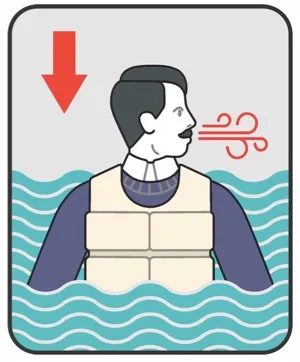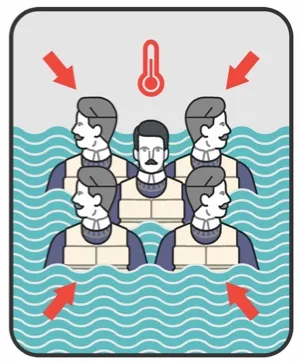1. Layer up

Put on as much clothing as you can find. Wool repels water, creating insulating air pockets even when wet. A waterproof layer will trap air and help keep you afloat. Put on a life jacket or stuff your top with empty containers for buoyancy.
2. Don’t jump

Titanic’s lifeboat deck was 17.6m above the water, and even a 6m jump is enough to compress your spine and break bones. Wait for the boat to sink first – the idea that you will be sucked under with it has been tested and disproved.
3. Keep calm

Breathe out as you hit the water to help counter the inhalation reflex caused by the cold shock response. Cold shock also causes a minute of hyperventilation. Once this subsides, you have 10 minutes before your limbs are too cold to move.
4. Stay warm

Climb onto some debris. Even a cold wind won’t freeze you as fast as the sea. If you can’t find anything, huddle next to other survivors. In cold water it takes 15 to 60 minutes for your core temperature to drop below 28°C and stop your heart.
Subscribe to BBC Focus magazine for fascinating new Q&As every month and follow @sciencefocusQA on Twitter for your daily dose of fun science facts.
